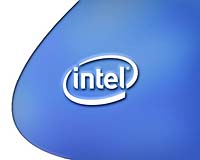 |
San Francisco (AFP) Feb 4, 2010 Cyber crooks are rigging the Internet with booby-trapped blog commentary, chat rooms, email messages and websites, according to a Websense report released Thursday. Analysis of online threats during the second half of 2009 showed that 81 percent of email was rigged to deliver "malicious" code and 95 percent of comments posted to blog or chat forums were spam or links to nasty payloads. Search Engine Optimization (SEO) poisoning attacks were a favored tactic, piggybacking on hot topics such as celebrity deaths or major disasters to lure people to websites designed to infect computers. "It is pretty scary," said Websense security research manager Stephan Chenette. "Attackers have been moving in the same direction as Bing and Google with real-time search results." The rival Internet search engines have been improving results pages to feature fresh content such as Twitter posts in real time. Hackers use armies of infected computers referred to as "botnets" to host a plethora of bogus websites and swiftly lift links high into Internet search results based on hot topics at any given moment, Chenette said. "They use botnets nowadays to give them control over search engine rankings," Chenette said of hackers. "The are jumping on the band wagon of any big event; at a drop of a dime they can instruct botnets to run websites and raise those links high in searches." Websense found that 13.7 percent of the time trick websites rigged with "malware" were included in the top 100 results for searches conducted using words from Yahoo! Buzz or Google Trend hot topics tracking services. "Attackers are following every real-time event that is happening and changing, minute-by-minute, their rankings in Google search," Chenette said. "Attackers are as real time as any real-time search engine." Websense gathered its data from a Threat Seeker Network that every hour scans more than 40 million Web sites for malicious code and nearly 10 million emails for nefarious content. A popular malicious payload is a "scareware" program designed to frighten people into paying to fix computer problems that don't exist. Computer viruses also typically install code that lets hackers commandeer control of machines, adding them to botnets. The number of malicious websites more than doubled from the second half of 2008 to the same six-month period last year, according to Websense. Making matters worse, hackers are also increasingly planting viruses on websites people have grown to trust. Approximately 71 percent of the websites found by Websense to have malware were legitimate websites that had been compromised without the operators knowledge. "It's almost as if you can't trust the sites you know," Chenette said. Hackers are also combining tactics. For example, recent cyberattacks on some 30 firms including Google combined using trick emails and malicious software to invade company systems.
Share This Article With Planet Earth
Related Links Cyberwar - Internet Security News - Systems and Policy Issues
 Google, US intel to team up to fight cyberattacks: report
Google, US intel to team up to fight cyberattacks: reportWashington (AFP) Feb 4, 2010 US Internet giant Google is enlisting the help of the top US electronic surveillance organization to ward off cyberattacks, The Washington Post reported Thursday. The report emerged amid an ugly spat between Beijing and Google, which has threatened to pull out of the Chinese market over cyberattacks and Web censorship in China. Under an agreement still in the works, the National Security ... read more |
|
| The content herein, unless otherwise known to be public domain, are Copyright 1995-2010 - SpaceDaily. AFP and UPI Wire Stories are copyright Agence France-Presse and United Press International. ESA Portal Reports are copyright European Space Agency. All NASA sourced material is public domain. Additional copyrights may apply in whole or part to other bona fide parties. Advertising does not imply endorsement,agreement or approval of any opinions, statements or information provided by SpaceDaily on any Web page published or hosted by SpaceDaily. Privacy Statement |